Self-Tuning Observer for Sensor Fault-Tolerant Control of Induction Motor Drive
Abstract
1. Introduction
- When a sensor fault is detected, the system switches to an alternate form of the controller (typically from a closed loop control system to an open loop control system);
- When a sensor failure is detected, the system still works in the closed control loop using estimated quantities (instead of the measured ones) provided by estimators.
- The method is based on the comparison between the measured and estimated speed and stator currents, respectively. For the speed and current estimation, two observers derived from the current-based MRAS (CB-MRAS [26]) observer are proposed for both the detection of a faulty sensor and also compensation using the estimated rotor speed or stator currents;
- The algorithm is much simpler in comparison with state observers (Luenberger observer etc.) or the Kalman filter, but it provides an accurate estimation of the rotor speed or stator current vector (see chapter 3 and 4 for the simulation and experimental results);
- The disadvantage of most MRAS-type observers is the influence of the motor parameters (mainly the stator and rotor resistance) on the quality of the estimated quantities, especially at low speeds [26,27,28,29,30,31,32,33]. The proposed approach is independent of the motor parameters using a recursive least square method (RLS) to estimate the parameters of the speed and current observers. Moreover, the RLS method is easy for implementation in digital signal controllers, and it enables us to compensate for the inaccuracies in the evaluation of the stator voltage vector so that the reference stator voltage vector (the input to the PWM, see Figure 1) can be directly used as the input to the observers and a nonlinear voltage-source inverter model (dead times compensation, voltage drops etc.) is not needed in the control scheme;
- The proposed fault-tolerant control offers the drive operation while a speed sensor or one/two current sensors fault occurs;
- The approach enables the drive operation in the direct field-oriented control (DFOC) even when all current sensors are faulty. In the literature concerning the fault-tolerant control, the indirect field-oriented control (IFOC) is very often used;
- The presented solution based on the RLS can be used for other new MRAS-type concepts as the CB-MRAS with an auxiliary variable [31] to avoid the motor parameters influence.
2. Fault-Tolerant Control of Induction Motor Drive
2.1. Control under Speed Sensor Failure
2.2. Control under Current Sensor Failure
2.3. Self-Tuning of Rotor Speed and Stator Current Observers
3. Simulation Results
4. Experimental Results
5. Conclusions
Author Contributions
Funding
Institutional Review Board Statement
Informed Consent Statement
Conflicts of Interest
References
- Manohar, M.; Das, S. Current sensor fault-tolerant control for direct torque control of induction motor drive using flux linkage observer. IEEE Trans. Ind. Informat. 2017, 13, 2824–2833. [Google Scholar] [CrossRef]
- Salmasi, F.R. A Self-healing induction motor drive with model free sensor tampering and sensor fault detection, isolation, and compensation. IEEE Trans. Ind. Electron. 2017, 64, 6105–6115. [Google Scholar] [CrossRef]
- Chakraborty, C.; Verma, V. Speed and current sensor fault detection and isolation technique for induction motor drive using axes transformation. IEEE Trans. Ind. Electron. 2015, 62, 1943–1954. [Google Scholar] [CrossRef]
- Toma, S.; Capocchi, L.; Capolino, G.A. Wound-rotor induction generator inter-turn short-circuits diagnosis using a new digital neural network. IEEE Trans. Ind. Electron. 2013, 60, 4043–4052. [Google Scholar] [CrossRef]
- Gritli, Y.; Zarri, L.; Rossi, C.; Filippetti, F.; Capolino, G.A.; Casadei, D. Advanced diagnosis of electrical faults in wound-rotor induction machines. IEEE Trans. Ind. Electron. 2013, 60, 4012–4024. [Google Scholar] [CrossRef]
- Leite, V.C.M.N.; Borges da Silva, J.G.; Veloso, G.F.C.; Borges da Silva, L.E.; Lambert-Torres, G.; Bonaldi, E.L.; Ely de Lacerda de Oliveira, L. Detection of localized bearing faults in Induction Machines by spectral kurtosis and envelope analysis of stator current. IEEE Trans. Ind. Electron. 2015, 62, 1855–1865. [Google Scholar] [CrossRef]
- Merizalde, Y.; Hernández-Callejo, L.; Duque-Perez, O. State of the art and trends in the monitoring, detection and diagnosis of failures in electric induction motors. Energies 2017, 10, 1056. [Google Scholar] [CrossRef]
- Zidani, F.; Diallo, D.; Benbouzid, M.E.H.; Said, R.N. A fuzzy-based approach for the diagnosis of fault modes in a voltage-fed PWM inverter induction motor drive. IEEE Trans. Ind. Electron. 2008, 55, 586–593. [Google Scholar] [CrossRef]
- Aleenejad, M.; Mahmoudi, H.; Jafarishiadeh, S.; Ahmadi, R. Fault-tolerant space vector modulation for modular multilevel converters with bypassed faulty submodules. IEEE Trans. Ind. Electron. 2019, 66, 2463–2473. [Google Scholar] [CrossRef]
- Gao, Z.; Cecati, C.; Ding, S.X. A survey of fault diagnosis and fault-tolerant techniques—Part I: Fault diagnosis with model-based and signal-based approaches. IEEE Trans. Ind. Electron. 2015, 62, 3757–3767. [Google Scholar] [CrossRef]
- Romero, M.E.; Seron, M.M.; Dona, J.A.D. Sensor fault-tolerant vector control of induction motors. IET Control Theory Appl. 2010, 4, 1707–1724. [Google Scholar] [CrossRef]
- Rothenhagen, K.; Fuchs, F.W. Current sensor fault detection, isolation, and reconfiguration for doubly fed induction generators. IEEE Trans. Ind. Electron. 2009, 56, 4239–4245. [Google Scholar] [CrossRef]
- Salmasi, F.R.; Najafabadi, T.A. An adaptive observer with online rotor and stator resistance estimation for induction motors with one phase current sensor. IEEE Trans. Energy Convers. 2011, 26, 959–966. [Google Scholar] [CrossRef]
- Zhang, X.; Foo, G.; Vilathgamuwa, M.D.; Tseng, K.J.; Bhangu, B.S.; Gajanayake, C. Sensor fault detection, isolation and system reconfiguration based on extended Kalman filter for induction motor drives. IET Elect. Power Appl. 2013, 7, 607–617. [Google Scholar] [CrossRef]
- Raisemche, A.; Boukhnifer, M.; Larouci, C.; Diallo, D. Two active fault-tolerant control schemes of induction motor drive in EV or HEV. IEEE Trans. Veh. Technol. 2014, 63, 19–29. [Google Scholar] [CrossRef]
- Berriri, H.; Naouar, M.W.; Belkhodja, I.S. Easy and fast sensor fault detection and isolation algorithm for electrical drives. IEEE Trans. Power Electron. 2012, 27, 490–499. [Google Scholar] [CrossRef]
- Najafabadi, T.A.; Salmasi, F.R.; Maralani, P.J. Detection and isolation of speed-, dc-link voltage-, and current-sensor faults based on an adaptive observer in induction-motor drives. IEEE Trans. Ind. Electron. 2011, 58, 1662–1672. [Google Scholar] [CrossRef]
- Verma, V.; Chakraborty, C.; Maiti, S.; Hori, Y. Speed sensorless vector controlled induction motor drive using single current sensor. IEEE Trans. Energy Convers. 2013, 28, 938–950. [Google Scholar] [CrossRef]
- Yu, Y.; Zhao, Y.; Wang, B.; Huang, X.; Xu, D. Current sensor fault diagnosis and tolerant control for VSI-based induction motor drives. IEEE Trans. Power Electron. 2018, 33, 4238–4248. [Google Scholar] [CrossRef]
- Yu, Y.; Wang, Z.; Xu, D. Speed and current sensors fault detection and isolation based on adaptive observers for induction motor drivers. J. Power Electron. 2014, 14, 967–979. [Google Scholar] [CrossRef]
- Benbouzid, M.E.H.; Diallo, D.; Zeraoulia, M. Advanced fault tolerant control of induction-motor drives for EV/HEV traction application: From conventional to modern and intelligent control techniques. IEEE Trans. Veh. Technol. 2007, 56, 519–528. [Google Scholar] [CrossRef]
- Tabbache, B.; Rizoug, N.; Benbouzid, M.E.H.; Kheloui, A. A control reconfiguration strategy for post-sensor FTC in induction motor based EVs. IEEE Trans. Veh. Technol. 2013, 62, 965–971. [Google Scholar] [CrossRef]
- Liu, Y.; Stettenbenz, M.; Bazzi, A.M. Smooth fault-tolerant control of induction motor drives with sensor failures. IEEE Trans. Power Electron. 2019, 34, 3544–3552. [Google Scholar] [CrossRef]
- Klimkowski, K.; Dybkowski, M. Neural network approach for stator current sensor fault detection and isolation for vector controlled induction motor drive. In Proceedings of the IEEE International Power Electronics and Motion Control Conference, Varna, Bulgaria, 18–23 September 2016; pp. 1072–1078. [Google Scholar]
- Li, H.; Monti, A.; Ponci, F. A fuzzy-based sensor validation strategy for ac motor drives. IEEE Trans. Ind. Inform. 2012, 8, 839–848. [Google Scholar] [CrossRef]
- Orlowska-Kowalska, T.; Dybkowski, M. Stator-current-based MRAS estimator for a wide range speed-sensorless induction-motor drive. IEEE Trans. Ind. Electron. 2010, 57, 1296–1308. [Google Scholar] [CrossRef]
- Korzonek, M.; Tarchala, G.; Orlowska-Kowalska, T. A review on MRAS-type speed estimators for reliable and efficient induction motor drives. ISA Trans. 2019, 93, 1–13. [Google Scholar] [CrossRef]
- Perdukova, D.; Fedor, P.; Fedak, V.; Padmanaban, S. Lyapunov based reference model of tension control in a continuous strip processing line with multi-motor drive. Electronics 2019, 8, 60. [Google Scholar] [CrossRef]
- Orlowska-Kowalska, T.; Korzonek, M.; Tarchała, G. Stability analysis of selected speed estimators for induction motor drive in regenerating mode—A comparative study. IEEE Trans. Ind. Electron. 2017, 64, 7721–7730. [Google Scholar] [CrossRef]
- Korzonek, M.; Orlowska-Kowalska, T. Stability analysis of MRASCC speed estimator in motoring and regenerating mode. Power Electron. Drives 2016, 1, 113–131. [Google Scholar]
- Korzonek, M.; Tarchala, G.; Orlowska-Kowalska, T. Simple stability enhancement method for stator current error-based MRAS-type speed estimator for induction motor. IEEE Trans. Ind. Electron. 2020, 67, 5854–5866. [Google Scholar] [CrossRef]
- Ravi-Teja, A.V.; Chakraborty, C.; Maiti, S.; Hori, Y. A new model reference adaptive controller for four quadrant vector controlled induction motor drives. IEEE Trans. Ind. Electron. 2012, 59, 3757–3767. [Google Scholar] [CrossRef]
- Listwan, J.; Pienkowski, K. Comparative analysis of control methods with model reference adaptive system estimators of a seven-phase induction motor with encoder failure. Energies 2021, 14, 1147. [Google Scholar] [CrossRef]
- Vas, P. Sensorless Vector and Direct Torque Control; Oxford University Press: New York, NY, USA, 1998. [Google Scholar]
- Weidauer, J.; Dittrich, A. A new adaptation method for induction machines with field-oriented control. In Proceedings of the EPE European Conference on Power Electronics and Applications, Firenze, Italy, 3–6 September 1991; pp. 151–155. [Google Scholar]

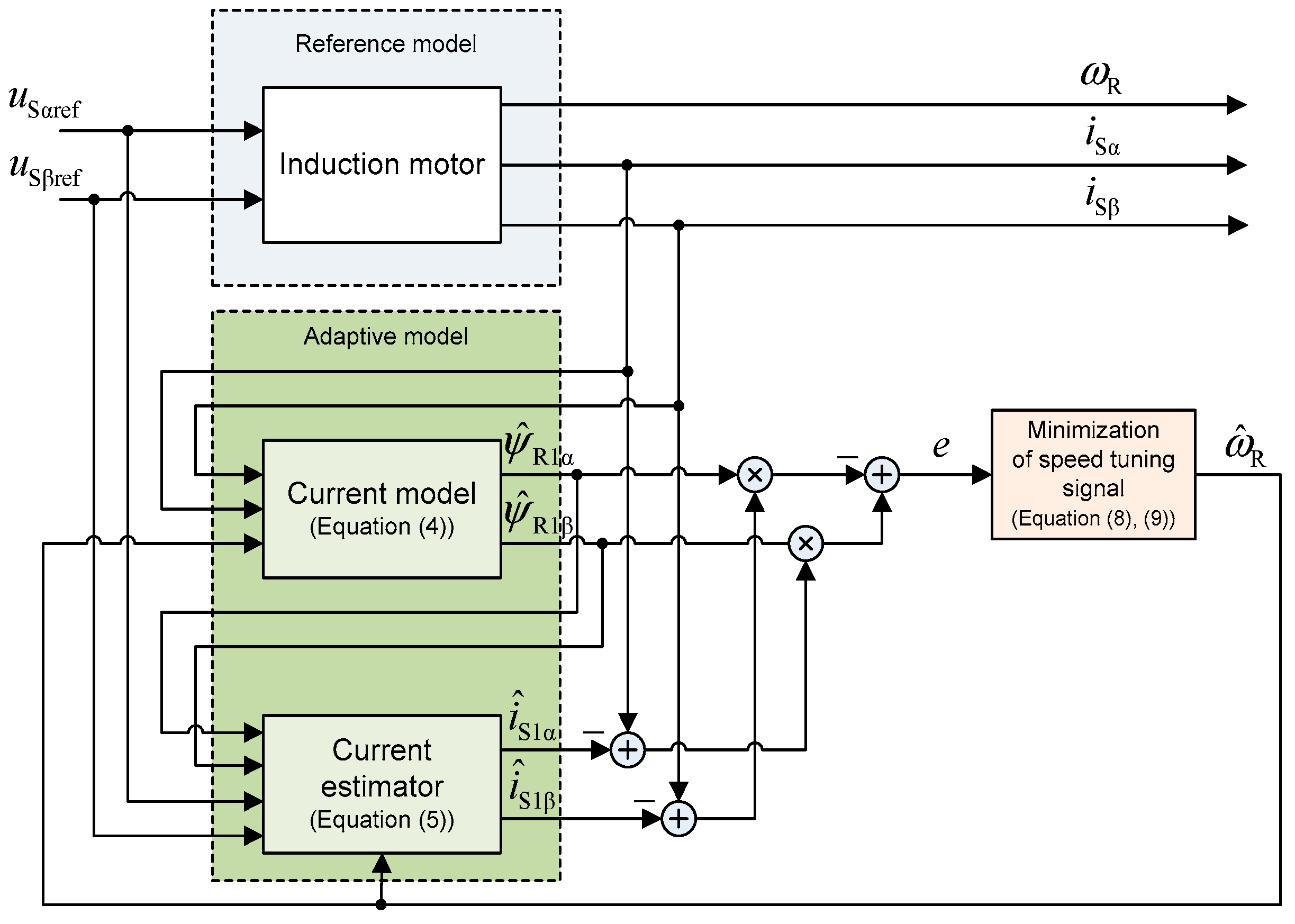
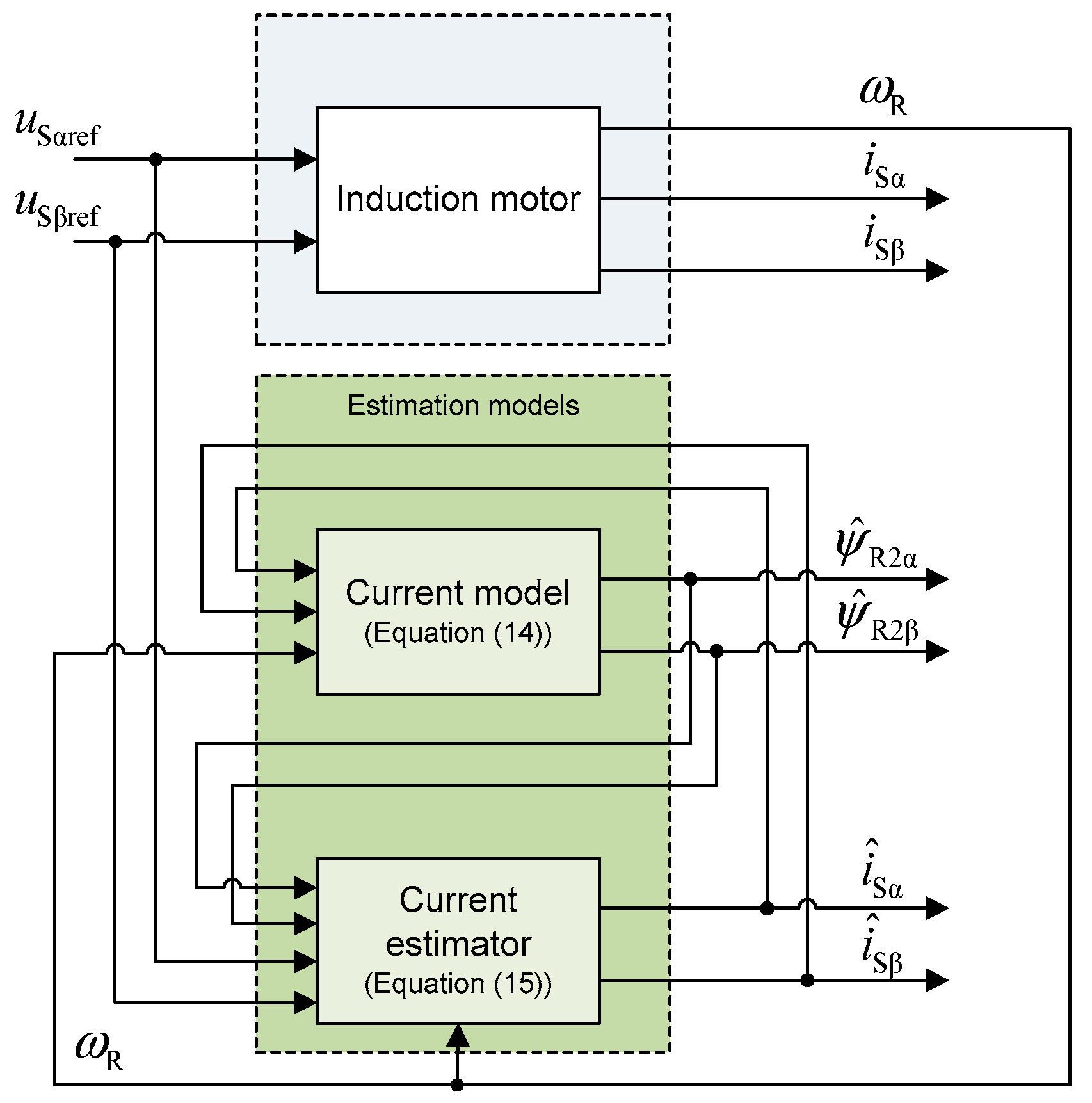
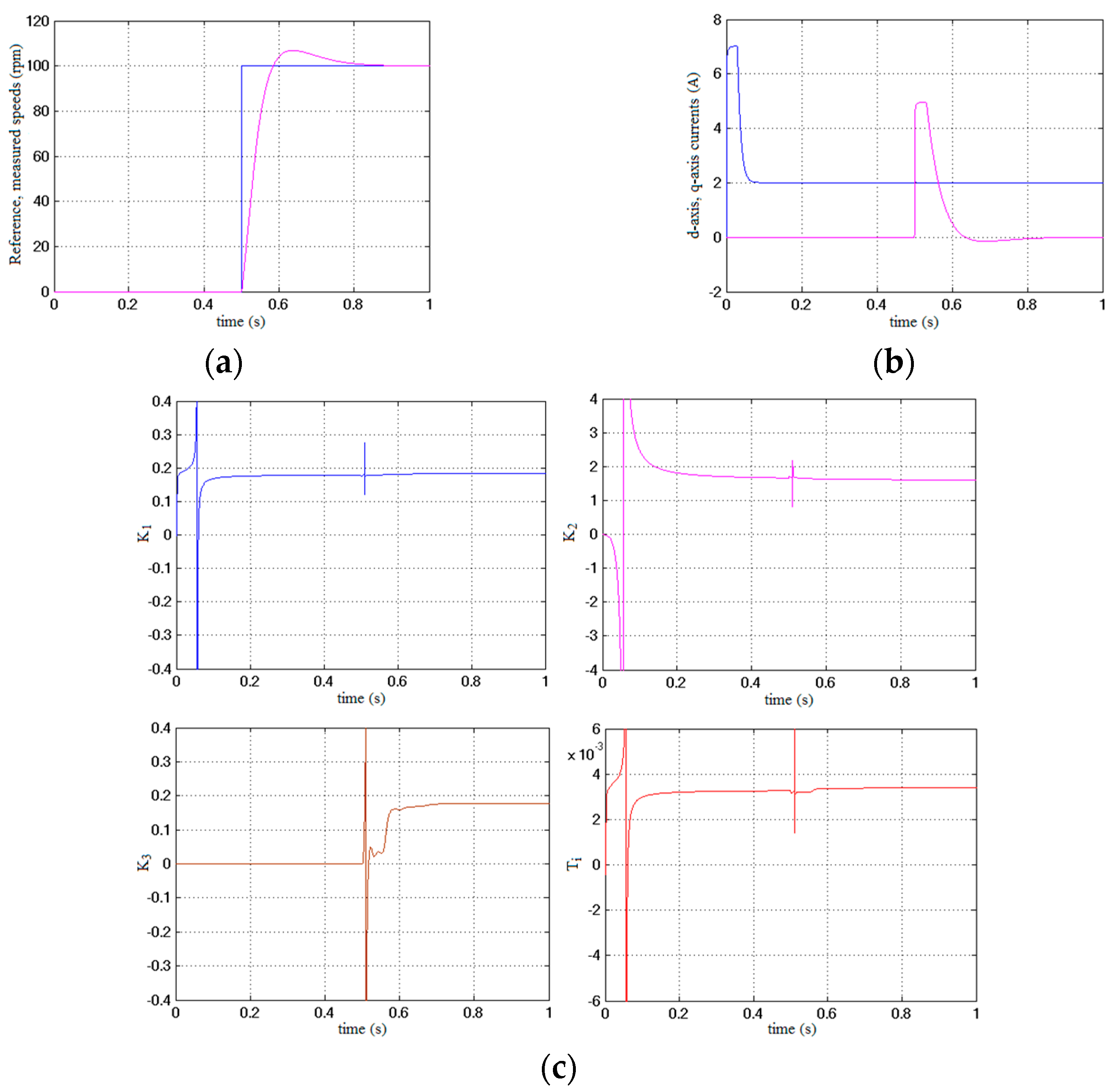


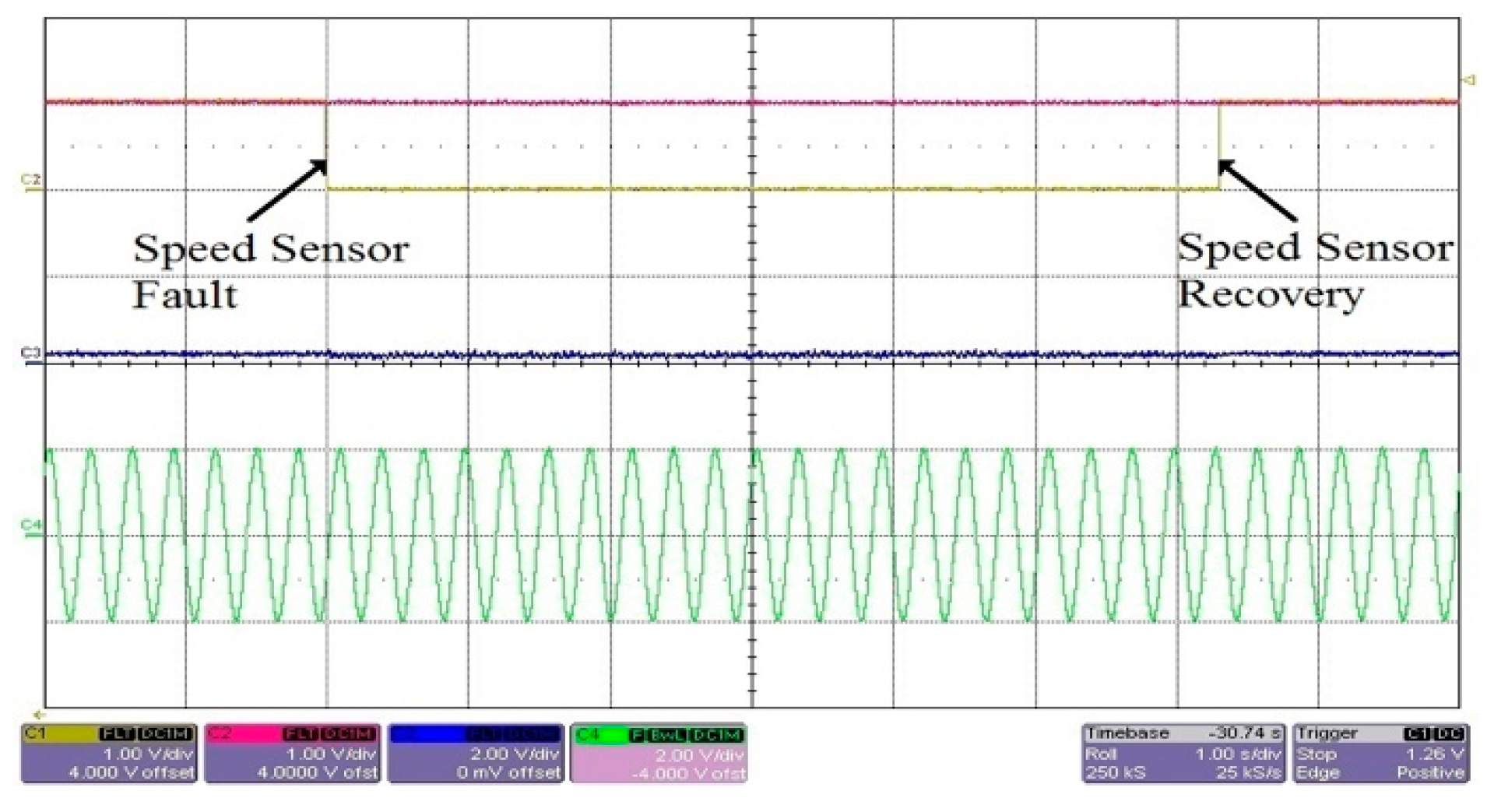
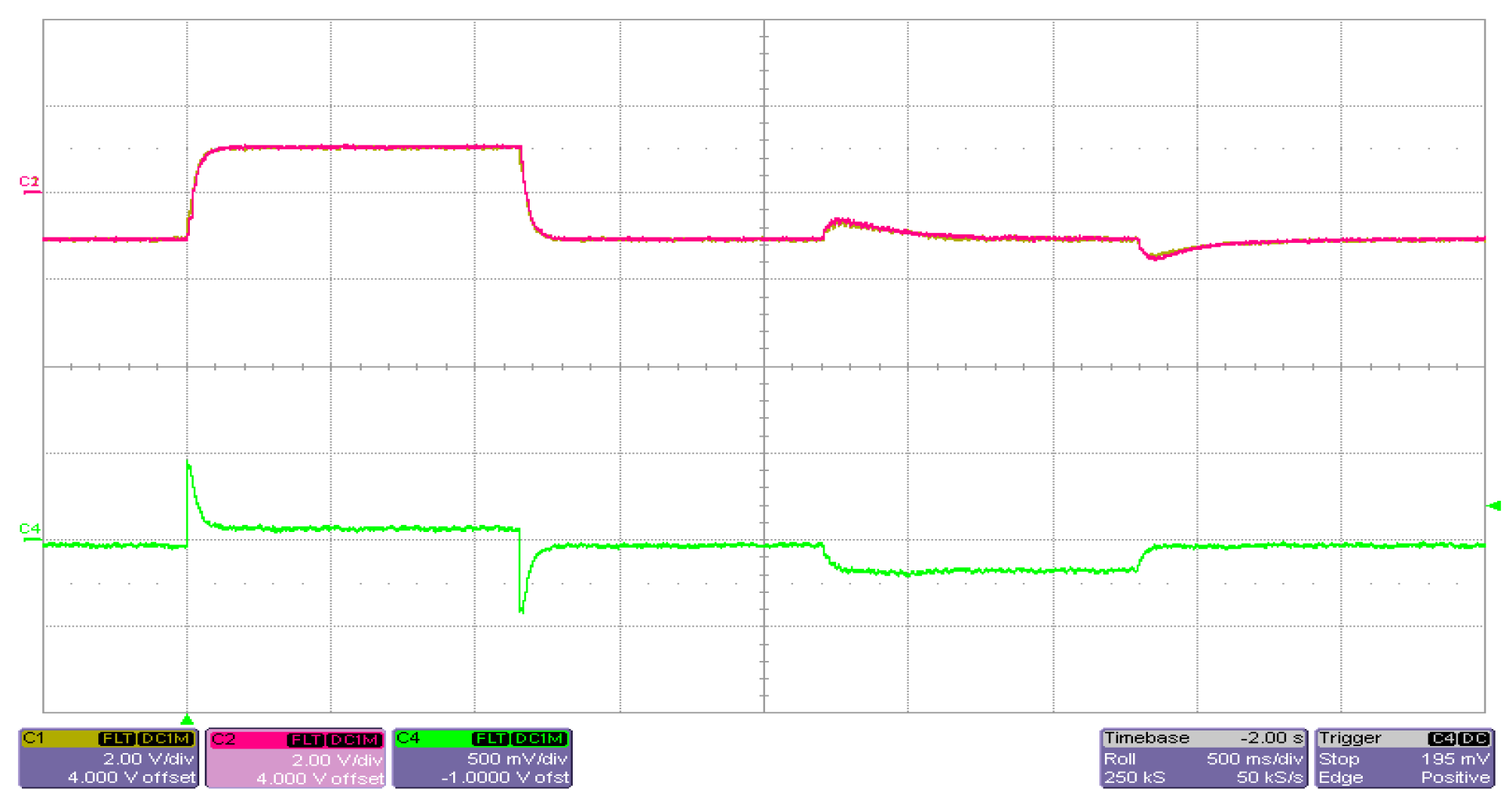
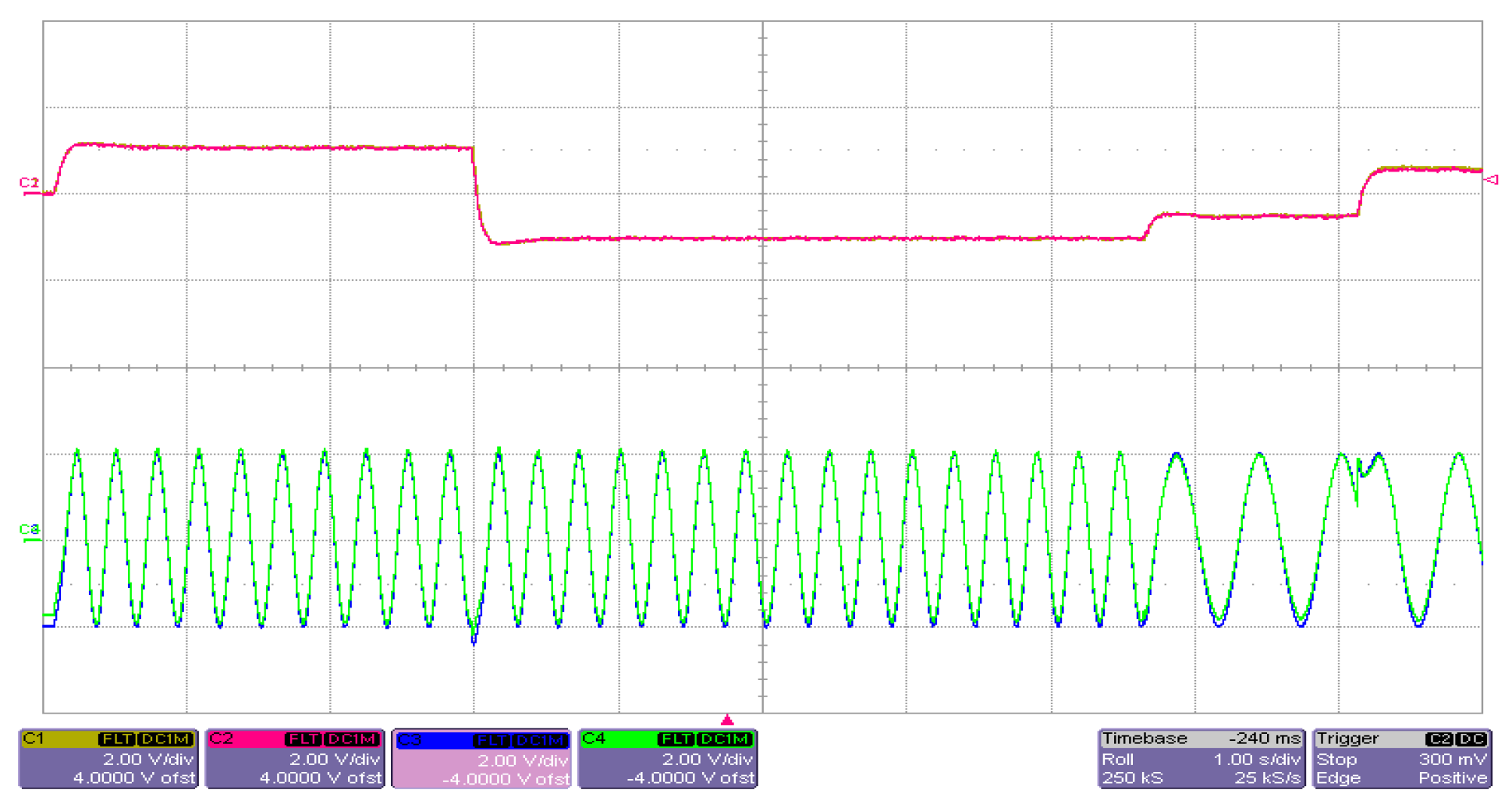
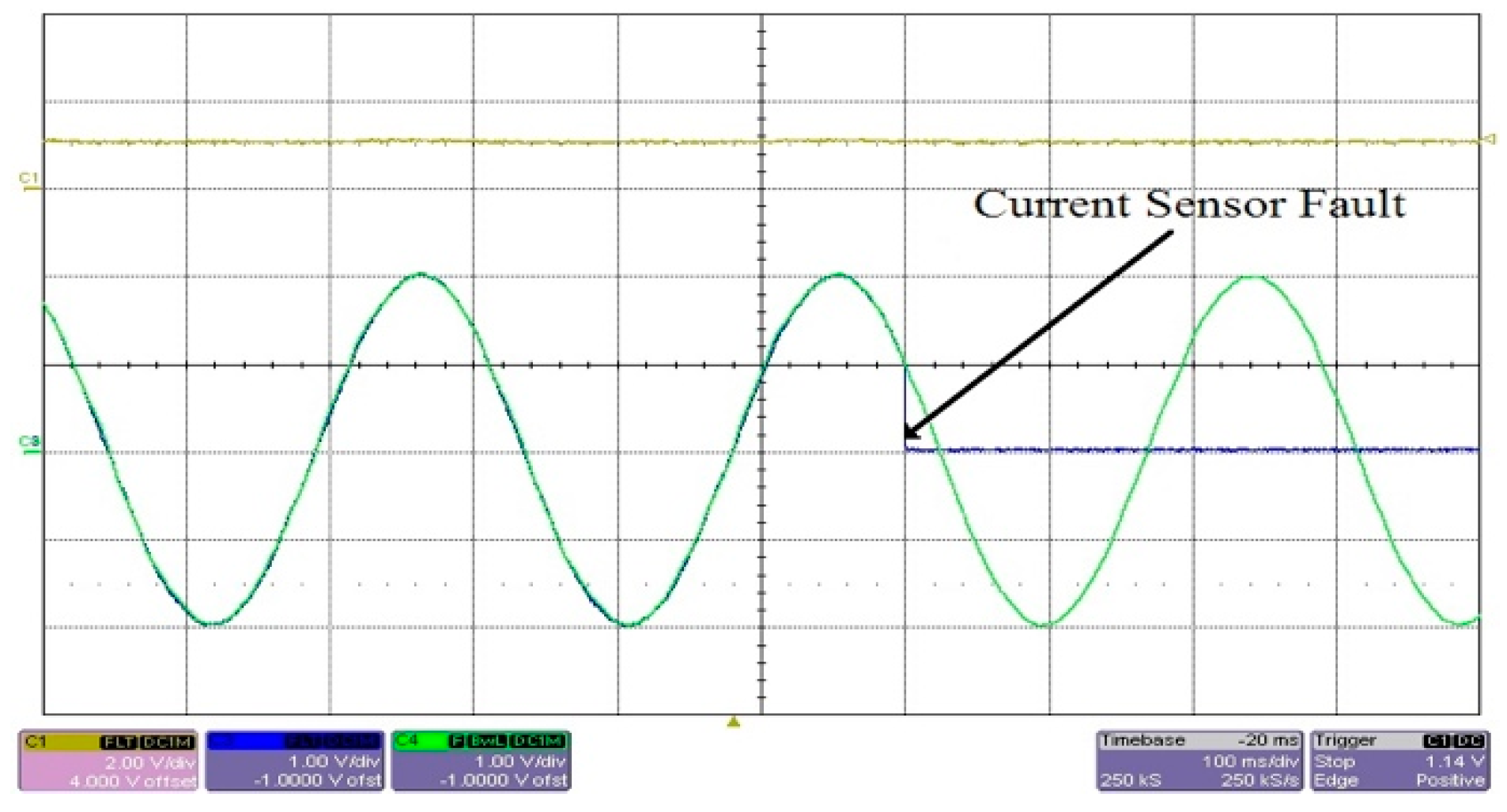
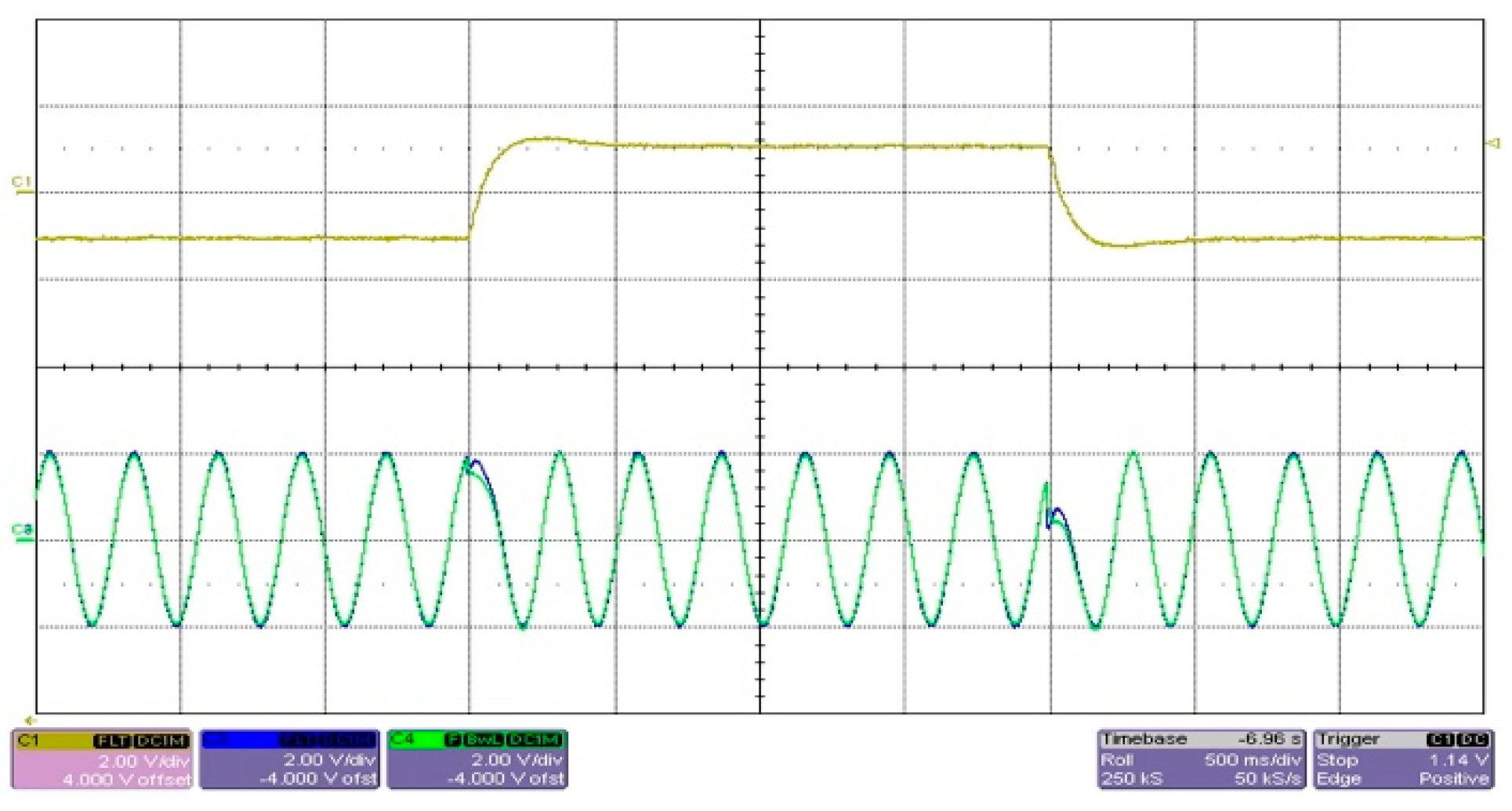

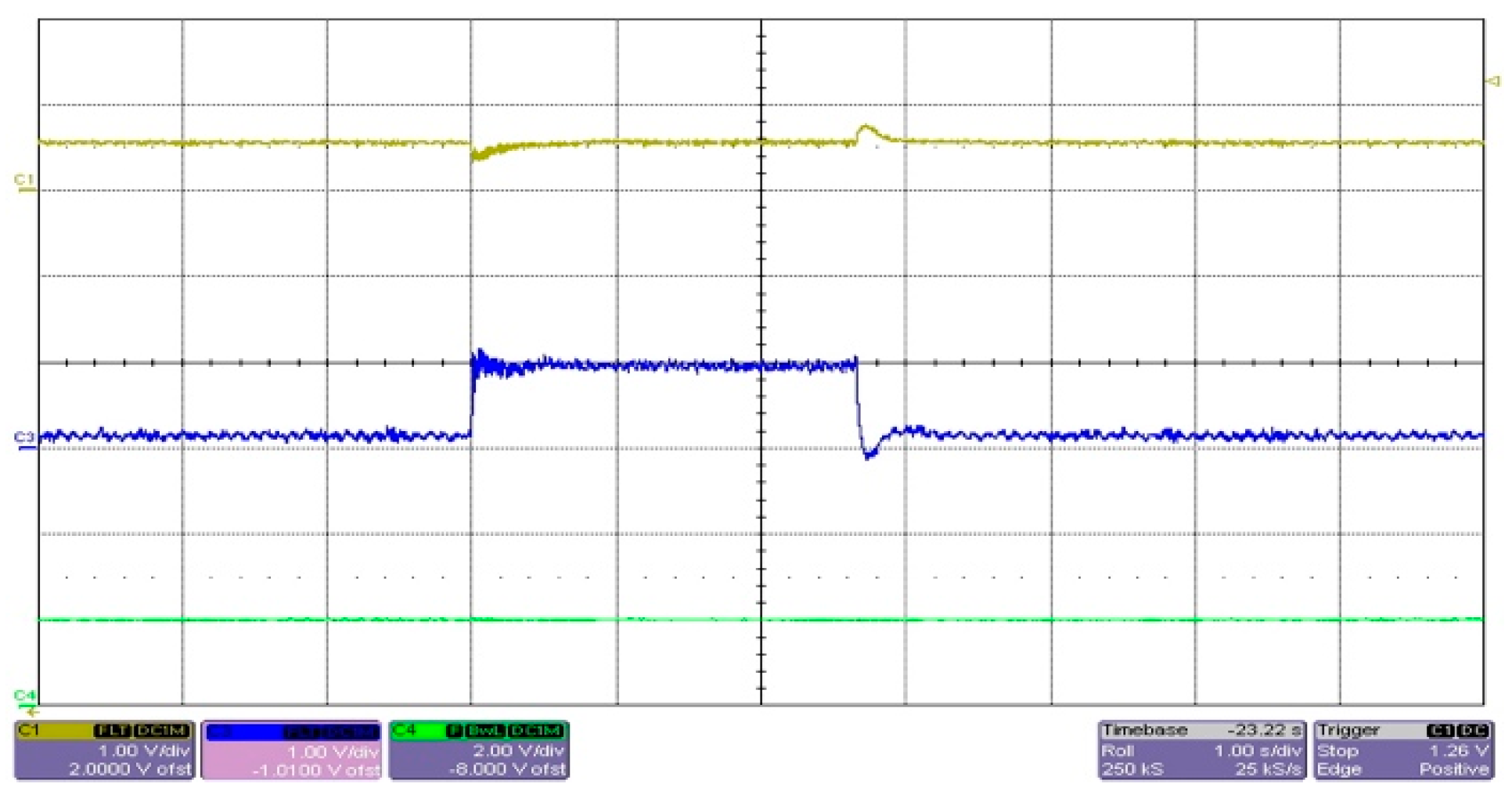
| Parameter | Value |
|---|---|
| Rated power | 2.2 kW |
| Rated speed | 1425 rpm |
| Rated voltage | 230 V/400 V |
| Rated current | 8.8 A/4.8 A |
| Rated torque | 14.8 Nm |
| Number of pole-pairs | 2 |
| Stator resistance | 2.78 Ω |
| Rotor resistance | 2.84 Ω |
| Stator inductance | 319 mH |
| Rotor inductance | 318 mH |
| Magnetizing inductance | 309 mH |
| Moment of inertia | 0.0058 kgm2 |
| Parameter | Evaluated from IM Nominal Parameters | Estimated Using RLS—Simulation | Estimated Using RLS—Experiment |
|---|---|---|---|
| K1(CB) | 0.1831 | 0.1835 | 0.1598 |
| K2(CB) | 15.889 | 1.592 | 0.682 |
| K3(CB) | 0.1779 | 0.1783 | 0.1972 |
| Ti(CB) | 0.003432 | 0.003437 | 0.003448 |
Publisher’s Note: MDPI stays neutral with regard to jurisdictional claims in published maps and institutional affiliations. |
© 2021 by the authors. Licensee MDPI, Basel, Switzerland. This article is an open access article distributed under the terms and conditions of the Creative Commons Attribution (CC BY) license (https://creativecommons.org/licenses/by/4.0/).
Share and Cite
Kuchar, M.; Palacky, P.; Simonik, P.; Strossa, J. Self-Tuning Observer for Sensor Fault-Tolerant Control of Induction Motor Drive. Energies 2021, 14, 2564. https://doi.org/10.3390/en14092564
Kuchar M, Palacky P, Simonik P, Strossa J. Self-Tuning Observer for Sensor Fault-Tolerant Control of Induction Motor Drive. Energies. 2021; 14(9):2564. https://doi.org/10.3390/en14092564
Chicago/Turabian StyleKuchar, Martin, Petr Palacky, Petr Simonik, and Jan Strossa. 2021. "Self-Tuning Observer for Sensor Fault-Tolerant Control of Induction Motor Drive" Energies 14, no. 9: 2564. https://doi.org/10.3390/en14092564
APA StyleKuchar, M., Palacky, P., Simonik, P., & Strossa, J. (2021). Self-Tuning Observer for Sensor Fault-Tolerant Control of Induction Motor Drive. Energies, 14(9), 2564. https://doi.org/10.3390/en14092564






